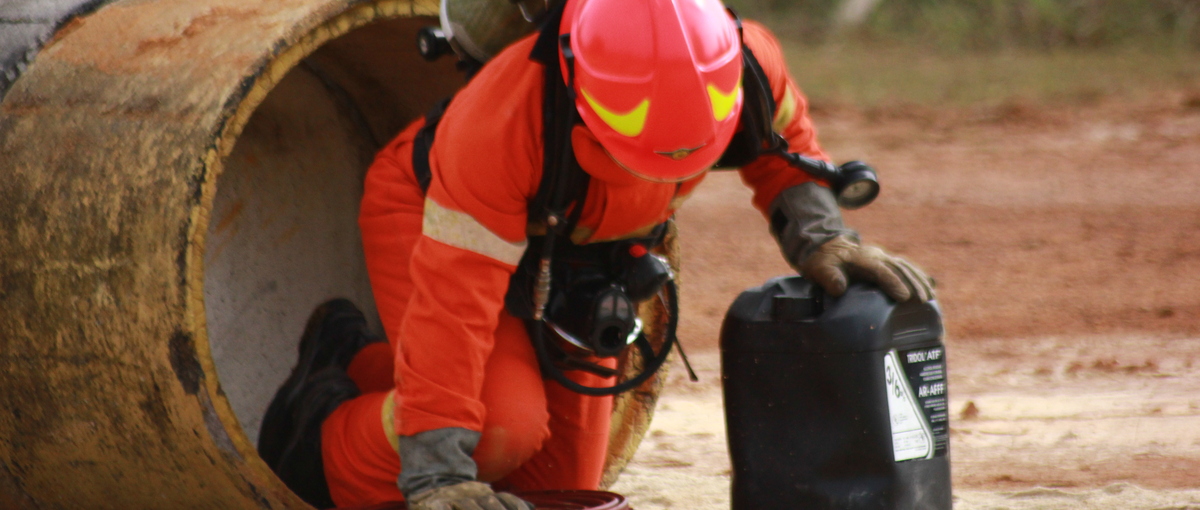Do You Need A Confined Space Rescue Team In Your Construction Site?
Do You Need A Confined Space Rescue Team In Your Construction Site?
February 20, 2023 |
In 2015, OSHA introduced new regulations for working with a confined space rescue team in construction as a safety measure. This regulation outlines what companies must undertake to safeguard their workers from confined space dangers. Understanding this rule can help you decide whether your construction site needs a confined space rescue team.
How Is a Permit Space Determined?
OSHA defines a “confined space” as having three characteristics:
- It must be big enough for employees to enter and undertake their jobs
- Have few or restricted entry and exit options
- Not intended for continuous occupancy
When a confined space satisfies one of the following conditions, it becomes a permit space. That means this space falls under the following:
- It has a hazardous atmosphere either currently present or could be.
- It has a component that might potentially engulf an individual.
- It has a configuration that could potentially trap an entrant.
- It contains any other known major health or safety risk.
On a construction site, permit spaces could take many different forms. A few examples include (but are not limited to):
- Boilers
- Bins
- Trenches and pits (elevators, escalators, pumps, valves, other equipment)
- Unventilated or inadequately ventilated rooms (sewers, storm drains, vats, silos, and tanks, chambers, and ducting)
- Tanks (water, liquid, chemical, fuel, solid, gas)
What Is a Confined Space Rescue Team?
During a scheduled entry into a confined space, a team of trained individuals known as a “confined space rescue team” provides rescue services and equipment. During a rescue in immediately dangerous to life and health (IDLH) environments, they offer emergency retrieval methods, supplied air units, personal protective gear, and medical trauma kits. To ensure safe access, the team also keeps an eye on all actions performed inside and outside the confined enclosure.
Many facilities find it more cost-effective to outsource these confined space rescue team services rather than have an in-house team.
Why Getting a Confined Space Rescue Team for Your Worksite Is a Good Idea
Getting a confined space rescue team for your project is essential due to the many hazards present when your employees work in confined spaces. Working in confined spaces can place workers at risk of death or severe injury. This could be caused by exposure to hazardous substances or dangerous conditions such as a lack of oxygen or flooding.
Working in confined spaces could result in fatal accidents or severe injuries. This includes those who attempt to perform rescues without the necessary training or tools.
When operating in confined spaces, here are some risks you need to know:
- Lack of oxygen
- Lack of natural light
- High levels of harmful dust, liquids, and solids quickly flooding the space
- High working temperatures
- Gas, fumes, or vapors filling the room, posing a health and safety risk as they may be combustible or poisonous
Does My Permit Space Require a Confined Space Rescue Team?
OSHA may require you to have a confined space rescue team. That’s especially true if you’ve identified a permit space on your new construction job and you intend to authorize one or more employees to enter it. How do you determine whether you need one?
The simplest approach to determining whether you need one is to ask yourself this question: “If the person inside the room were to become unconscious, could I remove them securely without entering the space?” The law requires you to have a confined space rescue team on-site or available on standby if your answer is no.
Differences Between On-site and Standby Confined Space Rescue Teams
A confined space rescue team can either be engaged to be present during a planned entry into the confined space or put on standby in a nearby location in case of emergencies.
A confined space rescue team must be present at the facility for permit-required confined spaces with a hazardous IDLH environment that cannot be eliminated by forced air ventilation.
For permit-required confined spaces that have the potential for entrapment or engulfment, or spaces where you wouldn’t be able to safely remove an entrant should they become unconscious, a confined space rescue team must be present either on-site or on standby. Rescue squads on standby must be close enough to your facility to respond quickly. This usually means a lead time of fewer than 5 minutes.
Rescue Solutions can provide you with a recommendation for the type of confined space rescue services you need for your facility. We can also offer confined space rescue training for your employees. With over 100 years of combined experience throughout our organizations, you can rest assured you get instruction that meets regulatory compliance and has real-world applicability.
